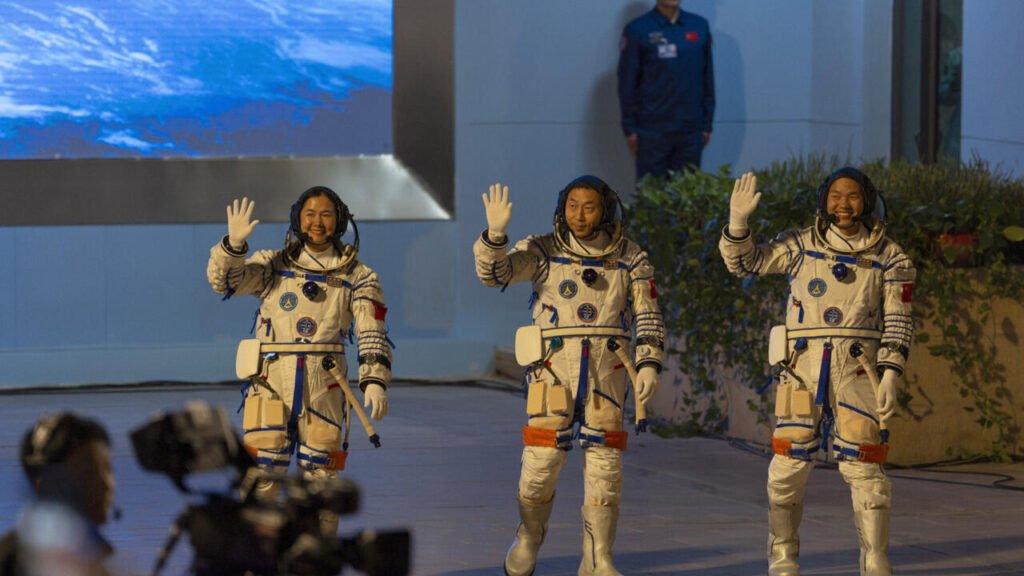BEIJING, CHINA — The return capsule of China’s Shenzhou-19 spacecraft, carrying astronauts Cai Xuzhe, Song Lingdong, and Wang Haoze, successfully touched down at the Dongfeng landing site in north China’s Inner Mongolia Autonomous Region on Wednesday.
On-site medical personnel promptly conducted examinations and confirmed that all three astronauts were in good health.
The China Manned Space Agency (CMSA) officially announced the Shenzhou-19 manned mission as a complete success.
The spacecraft executed a series of precisely orchestrated maneuvers to initiate its return sequence, commencing at 12:17 Beijing time. This involved the separation of the orbital module from the return capsule, followed by the ignition of the braking engine.
Subsequently, the return capsule detached from the propulsion module and began its descent through Earth’s atmosphere.
Employing the “fast return procedure,” a now standard protocol in recent Chinese spaceflights, the Shenzhou-19 completed its journey home in approximately 7.5 hours, orbiting the Earth just five times instead of the conventional eleven.
Upon landing, search and recovery teams swiftly located the capsule and arrived at the landing site. Following the hatch opening, medical staff confirmed the astronauts were in excellent condition.
The Shenzhou-19 manned spacecraft was launched from the Jiuquan Satellite Launch Center in northwest China on October 30th of the previous year. Following its launch, the spacecraft executed a rapid, automated rendezvous and docking with China’s Tiangong space station complex.
The three astronauts spent a total of 183 days in orbit, during which they conducted three spacewalks. Notably, during their first extravehicular activity on December 17, 2024, the crew set a new world record for the longest single spacewalk, lasting nine hours, according to CMSA, surpassing the previous record held by the Shenzhou-18 crew.
Astronaut Cai Xuzhe has now completed a total of five spacewalks, establishing him as the Chinese astronaut with the most extravehicular activities to date. Song Lingdong made history as the first Chinese astronaut born in the 1990s to perform a spacewalk, while Wang Haoze became the first female aerospace flight engineer to enter the Tiangong space station.
An earlier challenge during a cargo installation task, where a payload adapter became unexpectedly stuck, was successfully resolved by the Shenzhou-19 crew during their initial spacewalk. Their intervention was crucial in ensuring the continued smooth operation of subsequent scientific experiments.
Throughout their mission, the crew also conducted a diverse range of space science experiments spanning multiple disciplines, including fundamental physics in microgravity, space materials science, space life sciences, aerospace medicine, and space technology.

